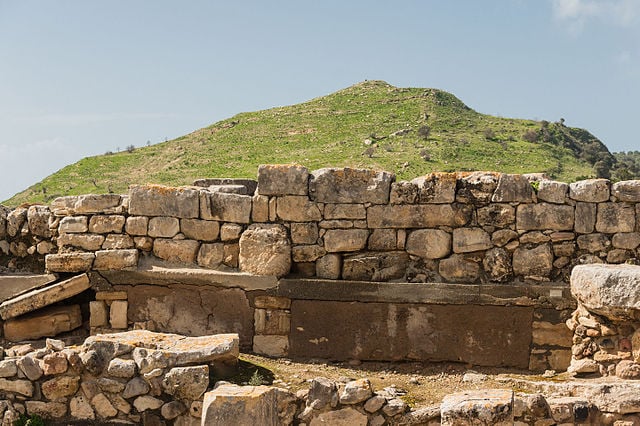
Crete faced incredible destruction in antiquity after an ancient quake destroyed nearly everything on the island and the region in 365 AD.
In fact, the underwater earthquake, which is believed to have been of a magnitude 8.0 or higher, destroyed nearly every town and city in the Eastern and Southern Mediterranean in an area ranging from mainland Greece to Africa and even Spain.
Region was destroyed by Crete earthquake in 365 AD
Archaeologists have conducted numerous excavations proving that most towns and cities in the area were destroyed around the time of the earthquake. This occurred in the early morning hours of July 21, 365.
Geologists and seismologists believe that the epicenter of the massive quake was off the coast of Crete where nearly all the towns were completely destroyed.
Recent geological studies show that the ancient earthquake may have been the result of a reactivation of all the major tectonic plate boundaries in the area. It is thought that the entire island of Crete was raised by an incredible nine meters, or thirty feet, after the earthquake.
The quake is believed to be the largest to have ever hit the region.
The earthquake on Crete was followed by further devastation when a tsunami devastated the southern and eastern coasts of the Mediterranean.
Thousands of people were killed by the tsunami, particularly in Alexandria, where the day of the tragic natural disaster was commemorated annually until the sixth century as the “Day of Horror.”
Historians describe the ancient earthquake
The massive earthquake and subsequent tsunami left a mark on historians and people of the time, who referenced the event frequently.
While some contemporary scholars debate whether they were all referring to the earthquake that took place on Crete in 365 or a series of other seismic events that all occurred around the same time period, ancient authors described the event in horrifying terms.
Many early Christian writers saw the quake as a sign from God of His disapproval of paganism, and some, such as ancient historians Sozomenus and Libanius, argued that the earthquake was a sign of divine wrath or sorrow and that the Emperor Julian tried to restore paganism two years before the seismic event.
Not only was the earthquake mentioned frequently by ancient sources, but the subsequent tsunami was also the subject of much focus in antiquity.
Ammianus Marcellinus, a Roman historian, described the cataclysmic event in detail in his writing. He described the sequence of events leading up to the disastrous tsunami, first detailing how the earthquake hit and then how the sea suddenly retreated followed by a giant wave that swallowed up the entire coast.
“Slightly after daybreak, and heralded by a thick succession of fiercely shaken thunderbolts, the solidity of the whole earth was made to shake and shudder, and the sea was driven away, its waves were rolled back, and it disappeared, so that the abyss of the depths was uncovered and many-shaped varieties of sea-creatures were seen stuck in the slime,” he wrote.
In his account of the earthquake, Ammianus Marcellinus further details how “the roaring sea, as if insulted by its repulse, [rose] back in turn, and through the teeming shoals dashed itself violently on islands and extensive tracts of the mainland…[flattening] innumerable buildings in towns or wherever they were found.”
See all the latest news from Greece and the world at Greekreporter.com. Contact our newsroom to report an update or send your story, photos and videos. Follow GR on Google News and subscribe here to our daily email!



